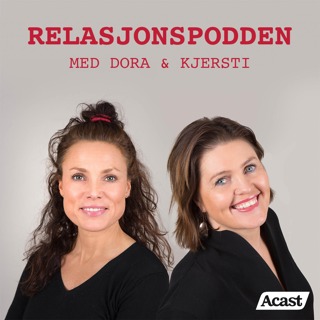
Bonus Episode 6 - ABA Inside Track Bloopers Vol. II
Subscribe on Apple Podcasts Subscribe on Google Play Subscribe on Stitcher It's that time of the year when Rob spends way too much time combing through the nonsensical garbage that didn't make the actual podcast to put together a semi-coherent amalgamation of our screw-ups, tangents, and off-task singing. It's our second volume of bloopers! Seriously, Rob spent hours editing this...try to laugh a little. Articles discussed this episode: None! There is nothing of value here!
27 Des 201721min

Episode 46 Preview
Subscribe on Apple Podcasts Subscribe on Google Play Subscribe on Stitcher Subscribe on YouTube We get ready to welcome back guest Nick Green to talk about behavioral fitness on our next full-length episode. But, before then, let's look back on 2017 together with a discussion of some of our personal, most essential research articles. Special note: Episode 46 will be released in 2 weeks (i.e., AFTER New Year's). Next week's episode will be our year-end blooper special. Whoopee! Articles for next week: De Luca, R.V. & Holborn, S.W. (1992). Effects of a variable-ratio reinforcement schedule with changing criteria on exercise in obese and nonobese boys. Journal of Applied Behavior Analysis, 25, 671-679. doi: 10.1901/jaba.1992.25-671 Galbraith, L.A. & Normand, M.P. (2017). Step it UP! Using the Good Behavior Game to increase physical activity with elementary school students at recess. Journal of Applied Behavior Analysis, 50, 856-860. doi: 10.1002/jaba.402
20 Des 201724min

Episode 45 - Women in Behavior Analysis w/ Devon Sundberg
Subscribe on Apple Podcasts Subscribe on Google Play Subscribe on Stitcher Whether you're a female or a male behavior analyst, we're sure you'll get a kick out of our discussion about the history of and challenges facing women in ABA. Don't believe us? Well, maybe Devon Sundberg, the primary organizer of the Women In Behavior Analysis conference can convince you. Devon brings us three fascinating articles discussing barriers of gender norms, the role of mentorship for young practitioners, and a batch of women in behavior analysis trivia. And after you listen in, perhaps you'll be inspired to attend the Women in Behavior Analysis conference this March. Tell 'em ABA Inside Track sent you! Articles discussed this episode: Ruiz, M.R. (2003). Inconspicuous sources of behavioral control: The case of gendered practices. The Behavior Analyst Today, 4, 12-16. doi: 10.1037/h0100005 LeBlanc, L.A. (2015). My mentors and their influences on my career. The Behavior Analyst, 38, 237-245. doi: 10/1007/s40614-015-0035-4 Simon, J.L., Morris, E.K., & Smith, N.G. (2007). Trends in women's participation at the meetings of the association for behavior analysis: 1975-2005. The Behavior Analyst, 30, 181-196. If you're interested in ordering CEs for listening to this episode, click here to go to the store page. You'll need to enter your name, BCBA #, and the two episode secret code words to complete the purchase. Email us at abainsidetrack@gmail.com for further assistance.
13 Des 20171h 25min

Episode 45 Preview
Subscribe on Apple Podcasts Subscribe on Google Play Subscribe on Stitcher Subscribe on YouTube Next week we'll be talking with special guest Devon Sundberg, coordinator of the Women in Behavior Analysis conference on the topic of--wait for it--women in behavior analysis. But first, some listener love for the Lake House and feedback on our feeding episode. Alliteration ahoy! Articles for next week: Ruiz, M.R. (2003). Inconspicuous sources of behavioral control: The case of gendered practices. The Behavior Analyst Today, 4, 12-16. doi: 10.1037/h0100005 LeBlanc, L.A. (2015). My mentors and their influences on my career. The Behavior Analyst, 38, 237-245. doi: 10/1007/s40614-015-0035-4 Simon, J.L., Morris, E.K., & Smith, N.G. (2007). Trends in women's participation at the meetings of the association for behavior analysis: 1975-2005. The Behavior Analyst, 30, 181-196.
6 Des 201711min

Episode 44 - Feeding
Subscribe on Apple Podcasts Subscribe on Google Play Subscribe on Stitcher While responding to challenges related to feeding isn't easy, aren't there set treatments that can be implemented to overcome any problem? Well....yes and no. While you ponder that mystery, enjoy this discussion of recent research related to a few of the common food refusal treatments including escape extinction, stimulus fading, and DRA. Be sure to listen all the way to the end for the terrifying twist ending!! Articles discussed this episode: Patel, M.R., Piazza, C.C., Martinez, C.J., Volkert, V.M., & Santana, C.M. (2002). An evaluation of two differential reinforcement procedures with escape extinction to treat food refusal. Journal of Applied Behavior Analysis, 35, 363-374. doi: 10.1901/jaba.2002.35-363 Mueller, M.M., Piazza, C.C., Patel, M.R., Kelley, M.E., & Pruett, A. (2004). Increasing variety of foods consumed by blending nonpreferred foods into preferred foods. Journal of Applied Behavior Analysis, 37, 159-170. doi: 10.1901/jaba.2004/37-159 Valdimarsdottir, H., Hallodorsdottir, L.Y., & Sigurdardardottir, Z.G. (2010). Increasing the variety of foods consumed by a picky eater: Generalization of effects across caregivers and settings. Journal of Applied Behavior Analysis, 43, 101-105. doi: 10.1901/jaba.2010.43-101 If you're interested in ordering CEs for listening to this episode, click here to go to the store page. You'll need to enter your name, BCBA #, and the two episode secret code words to complete the purchase. Email us at abainsidetrack@gmail.com for further assistance.
29 Nov 20171h 15min

Episode 44 Preview
Subscribe on Apple Podcasts Subscribe on Google Play Subscribe on Stitcher Subscribe on YouTube We can't think of anyone who works with individuals with autism who hasn't been faced with food refusal. Next week, we'll be reviewing articles related to responding to feeding issues including using escape extinction and stimulus fading. But, in the meantime, enjoy this preview episode where we become the only ABA podcast willing to play the Crossfire 80's TV show jingle. We're just that brave. Articles for next week: Patel, M.R., Piazza, C.C., Martinez, C.J., Volkert, V.M., & Santana, C.M. (2002). An evaluation of two differential reinforcement procedures with escape extinction to treat food refusal. Journal of Applied Behavior Analysis, 35, 363-374. doi: 10.1901/jaba.2002.35-363 Mueller, M.M., Piazza, C.C., Patel, M.R., Kelley, M.E., & Pruett, A. (2004). Increasing variety of foods consumed by blending nonpreferred foods into preferred foods. Journal of Applied Behavior Analysis, 37, 159-170. doi: 10.1901/jaba.2004/37-159 Valdimarsdottir, H., Hallodorsdottir, L.Y., & Sigurdardardottir, Z.G. (2010). Increasing the variety of foods consumed by a picky eater: Generalization of effects across caregivers and settings. Journal of Applied Behavior Analysis, 43, 101-105. doi: 10.1901/jaba.2010.43-101
22 Nov 201719min

Episode 43 - Anxiety
Subscribe on Apple Podcasts Subscribe on Google Play Subscribe on Stitcher Is anxiety just some imprecise term developed by our verbal community? Or does anxiety refer to a specific series of private events that can affect human behavior? Well, we've spent over an hour discussing the who's, what's, and where's of anxiety in the hopes of coming to some sort of a conclusion. I don't know if we do, but at least Rob wrote a new song for the occasion! Articles discussed this episode: Friman, Patrick C., Hayes, S.C., & Wilson, K.G. (1998). Why behavior analysts should study emotion: The example of anxiety. Journal of Applied Behavior Analysis, 31, 137-156. doi: 10.1901/jaba.1998.31-137 Flood, W.A. & Wilder, D.A. (2004). The use of differential reinforcement and fading to increase time away from a caregiver in a child with separation anxiety disorder. Education and Treatment of Children, 27, 1-8. Hagopian, L.P. & Jennett, H.K. (2008). Behavioral assessment and treatment of anxiety in individuals with intellectual disabilities and autism. Journal of Developmental and Physical Disabilities, 20, 467-483. doi: 10/1007/s10882-008-9114-8 If you're interested in ordering CEs for listening to this episode, click here to go to the store page. You'll need to enter your name, BCBA #, and the two episode secret code words to complete the purchase. Email us at abainsidetrack@gmail.com for further assistance.
15 Nov 20171h 11min

Episode 43 Preview
Subscribe on Apple Podcasts Subscribe on Google Play Subscribe on Stitcher Subscribe on YouTube We're a little nervous to say it, but next week, we're going to talk about anxiety from a behavior analytic standpoint and try to make sense of whether or not its treatment is a realm appropriate for BCBAs to tackle. Spoiler: of course it is! Meanwhile, listen to Rob drone on about how great he is at running. And let us know if you like the new camera set up! Articles for next week: Friman, Patrick C., Hayes, S.C., & Wilson, K.G. (1998). Why behavior analysts should study emotion: The example of anxiety. Journal of Applied Behavior Analysis, 31, 137-156. doi: 10.1901/jaba.1998.31-137 Flood, W.A. & Wilder, D.A. (2004). The use of differential reinforcement and fading to increase time away from a caregiver in a child with separation anxiety disorder. Education and Treatment of Children, 27, 1-8. Hagopian, L.P. & Jennett, H.K. (2008). Behavioral assessment and treatment of anxiety in individuals with intellectual disabilities and autism. Journal of Developmental and Physical Disabilities, 20, 467-483. doi: 10/1007/s10882-008-9114-8
8 Nov 201721min





















